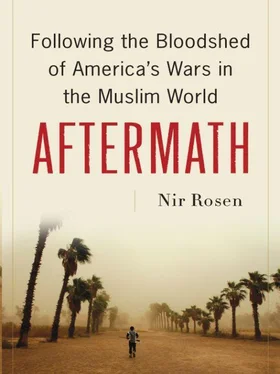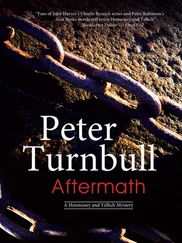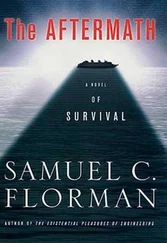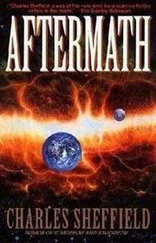My friend who had served as a commander for Gulbuddin Hekmatyar until 1992 and then as an official in the Taliban government was not sanguine when he drew comparisons. During the Soviet occupation the foreign army was larger and more powerful than the coalition today, at more than one hundred thousand, and the Afghan government was stronger than the current one as well, he told me. “The Russians never arrested women,” he said. “The Americans arrest Afghan women and take them to bases. The end will be like with the Russians. The Americans will never succeed in containing the conflict. There will be more bleeding, evacuation of foreigners. It’s coming to the same situation as the Communist forces, who were confined to the provincial capitals by 1985 or 1986. There were 465,000 military and civilian members of the puppet government, but the Russians were still confined to their bases.”
“Two years ago you could build a road or a bridge in a village and say, ‘Please don’t let the Taliban come,’” a senior development official told me. “Now you’ve reached the stage where the hearts-and-minds business doesn’t work. The countryside is caught between the coercive forces of state and coercive forces of antistate.” He quipped that the Americans’ continuous bombing of weddings wasn’t helping either. The Americans tried to increase aid and development and improve the government’s image only after it was too late. Afghans were already alienated, and the use of PRTs (Provincial Reconstruction Teams) delegitimized the aid, associating it with the military. American use of airpower convinced people that the coalition forces were not committed to fight and were cowardly, as I saw from my time with the Taliban.
After I left Afghanistan, I got regular e-mails from the U.S. military notifying me of how many Taliban coalition forces had killed, but all this showed me was how popular the Taliban continued to be and how many more of them there were than the U.S. claimed. Of course, many of those killed were civilians, and those casualties—along with the Americans’ increasing reliance on warlords and militias, who had imposed a reign of terror on the population—meant that it was too late to win hearts and minds.
The former Taliban government official agreed. “It’s too late to bring security by development.” That phase, the development official told me, ended in 2004. The former Taliban official explained the problems facing Afghan villagers. “You have to decide to be with Taliban or be with government,” he said. “In Logar, if you are with the government, you have to move to Kabul. If you are with Taliban you can stay, but you may have to give them your son.”
IN MAY 2009 Defense Secretary Robert Gates—the only holdover from the Bush administration—announced that Gen. Stanley McChrystal would replace Gen. David McKiernan as the top commander in Afghanistan. The unceremonious defenestration of the respected McKiernan was meant to send a strong signal of a new approach to the war. McChrystal, known among colleagues as a “snake eater,” had a background in special operations and counterterrorism. He ordered the fifth strategic review of the war since Obama’s presidency.
McChrystal’s promotion confirmed the ascendance of a new generation of officers epitomized by Gen. David Petraeus, now commander of Central Command and charged with overseeing the wars in Iraq and Afghanistan. The wars had created a community of counterinsurgency proponents in the Defense Department and at Washington think tanks. Many were serious intellectuals and veterans of Iraq and Afghanistan who had spent years exhorting the military and government to embrace COIN in fighting the global war on terror. The 2007 surge in Iraq and its alleged success in reducing violence has led this new generation of officers to dominate strategic thinking.
In December 2008 General McKiernan asked for thirty thousand more troops and stressed that he needed them for a few years. It would not be a short surge, like the one in Iraq. In March 2009 President Obama unveiled his new strategy for Afghanistan and Pakistan. The goals were “to disrupt, dismantle, and defeat Al Qaeda and its safe havens in Pakistan and to prevent their return to Pakistan or Afghanistan.” The tool would be COIN. The Americans gave themselves one year to “shift the momentum” in the war, meaning to stop losing. With thirty-six thousand American troops already in Afghanistan, Obama ordered an additional seventeen thousand combat troops and four thousand trainers. By mid-2010, troop numbers finally equaled the number stationed in Iraq, at nearly one hundred thousand.
Obama insisted that the war and extremism could not be solved through military means alone. He cautioned against focusing on the concept of “victory” when dealing with Al Qaeda, stressing that he wanted to deny the movement bases where they could train people or launch attacks. Obama’s new strategy called for a civilian surge as well. But there were not many civilians available, and most of those duties would be filled by the military.
Despite admitting that there was no military solution, Obama was relying on the military. And he reproduced the pathologies of his predecessor, treating Muslims as if they were one entity and the world as if it was a battlefield. Under Obama the United States has expanded its operations in Pakistan, Yemen, and Somalia. In all cases violence has increased. In Al Qaeda’s worldview, Muslims are under attack by Christians and Jews who want to take Muslims’ resources and perhaps convert them too.
The Bush administration had to transform its response to the 9/11 attacks into a crusade because, in purely security terms, the most powerful nation the world has ever seen went to war against two hundred unsophisticated extremists. Looking at it like that diminishes to absurdity the enemy and the threat it poses, but many in the defense policy establishment were nostalgic for a real enemy, like fascism or communism, and so they made the conflict about culture. The United States adopted Al Qaeda’s view of the world, and it too treated the entire world stage as a battlefield.
In July 2009 McChrystal issued new orders for soldiers not to pursue Taliban fighters if there was a chance of civilian casualties, and to drive slower and more respectfully on Afghanistan’s roads. But his predecessor had issued similar orders, albeit with less media fanfare—the new ones were not more likely to be obeyed. Thousands of Afghan civilians had been killed by the Americans since the war began. Most were killed by U.S. airstrikes, but many others were shot at checkpoints or in raids. Usually the military denied the civilian deaths until the media showed videos of their corpses. Most American-caused civilian casualties happened when soldiers called for close air support in the midst of a battle, so there was no time to check for civilians in the target range. In one attack alone, in May, the Americans killed between 86 and 140 civilians in an airstrike in western Afghanistan.
In late June the U.S. military initiated the first big push of the Afghan surge. Four thousand Marines launched an offensive to take over Taliban-controlled villages in Helmand, the province with the most attacks and the most poppy production for the country’s lucrative drug trade. But the plan called for an “Afghan face,” in the form of the Afghan army and police, and the Americans were desperately short of those. Afghan police were essential because they knew the language and the people and could provide intelligence. Their presence was needed to convince Afghans that the Americans were fighting on behalf of Afghanistan, and that it wasn’t a foreign occupation. If the Americans ever wanted to leave, they would have to train enough Afghan security forces so that they could hand the task of securing the country to them. There were only about 170,000 members of the Afghan army and police, although their expansion was being fast tracked. Afghan National Security Forces (ANSF) were supposed to hold an area after the Americans cleared it of insurgents, but there weren’t enough of them. While the Americans were initially focused on creating an Afghan army, they neglected the important need for a police force.
Читать дальше











